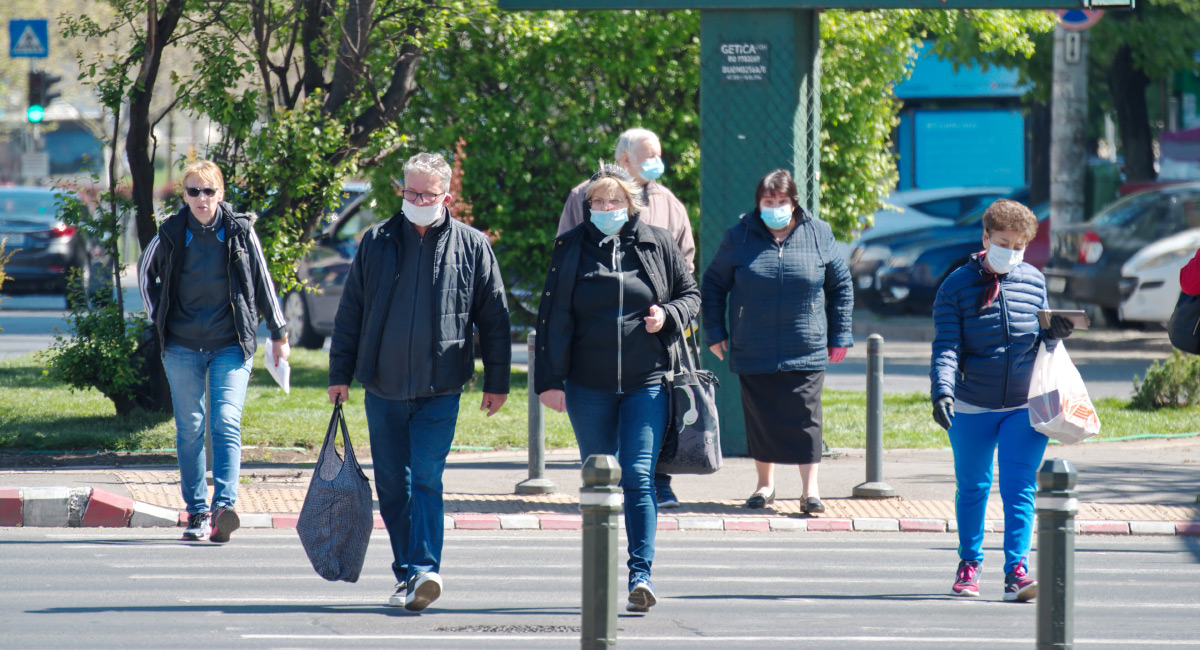The top scientific journal Nature Medicine published a study on Oct. 23 with an astounding claim: By simply wearing masks at higher rates, Americans could prevent as many as 130,000 Covid-19 fatalities by the end of February 2021. Produced by the University of Washington’s Institute for Health Metrics Evaluation, or IHME, the study garnered immediate acclaim.
More than 100 news outlets trumpeted the study’s findings in the days following its publication—“The Price for Not Wearing Masks: Perhaps 130,000 Lives” was the New York Times’s headline—and a few hundred more articles have been written since. Reporting was often paired with calls for a national mask mandate, echoing President-elect Biden and now Anthony Fauci, the top U.S. infectious-disease official. The study was also invoked by Francis Collins, head of the National Institutes of Health, to push for stricter masking requirements. Recognizing the potential importance, Nature Medicine rushed the study into print after an expedited peer-review process that took only seven days to complete.

Unfortunately, the IHME modelers’ findings contained an error that even minimal scrutiny should have caught. The projected number of lives saved, and the implied case for a mask mandate, are based on a faulty statistic. Using a months-old survey, IHME modelers assumed erroneously that the U.S. mask-adoption rate stood at only 49% as of late September, and therefore had plenty of room to increase to “universal adoption,” defined as 95%, or to a more plausible 85%. According to more recent survey findings, however, America’s mask-adoption rate has hovered around 80% since the summer.
New numbers would completely alter the IHME study’s findings. If 80% of Americans already wear masks, a new mandate could add only a few percentage points to the mask-adoption rate instead of nearly doubling it. Additional gains would be small and certainly nowhere near 130,000 lives saved.
The study’s documentation suggests the 49% figure came from survey data collected by the data-analytics firm Premise between April 23 and June 26. Although the paper in Nature Medicine explicitly labeled these data as current as of Sept. 21, they weren’t. And other surveys paint a very different picture. The YouGov/Economist tracking poll finds that the U.S. mask-usage rate skyrocketed in late spring and hit 78% on July 14. It has hovered in the high 70s and low 80s ever since.
This marked a dramatic change since March and April, when a flurry of conflicting messages—including from Dr. Fauci, Surgeon General Jerome Adams and the World Health Organization—cast doubt on the effectiveness of masks. As public-health advice shifted in favor of masks, most Americans took notice and added them to their routines.
The IHME team didn’t adjust. Its Sept. 21 estimates of U.S. mask adoption tracked the YouGov survey results beginning in March, but the two began to diverge in April. From mid-June on, the IHME’s Sept. 21 model understated mask usage by about 30 percentage points.
The YouGov survey isn’t alone, and the IHME’s substantially lower estimates make it a clear data outlier. A separate survey by Carnegie Mellon University shows that mask usage exceeded 80% in 41 of the 50 U.S. states as of Sept. 21. Today that’s up to 44 states. In California and the hard-hit Northeast, mask adoption exceeded 90%. These results align with a report from the Centers for Disease Control and Prevention, released a few days after the IHME paper, which shows U.S. mask adoption hitting 88.7% in June.
Part of the problem is that the IHME’s 49% mask-use estimate includes only those survey respondents who say they always wear a mask in public. This narrow definition excludes a great many people who regularly wear masks. YouGov, which gives respondents the option of saying they almost always wear masks, finds a mask-usage rate of 80% in its latest survey of Americans, with only 6% shunning the practice altogether.
The 49% figure hasn’t been accurate since late spring. U.S. masking rates have already approached or exceeded the more plausible threshold sought by IHME modelers. The projection that up to 130,000 lives could be saved appears to be unfounded, weakening the case for a national mask mandate.
The IHME study’s rapid dissemination in the media painted a misleading picture in which masks provide an easy fix to the pandemic. The danger of this misinformation has increased with the incoming Biden administration now signaling that it intends to enact a national mask mandate as one of its first policy directives. The faulty statistic is becoming an established “truth” of science reporting.
Nature Medicine’s editors have shown little interest in addressing the error. I asked the journal’s editors for a response, but they demurred for 13 days—nearly twice the time it took to vet the entire paper—and the belated answer wasn’t to correct course. An editor replied that the “alleged discrepancies” were “not issues of substance that would require further action” because “information about what datasets were utilized in the authors’ models and periods they encompass are reported in the study.”
In layman’s terms, Nature Medicine thinks it’s OK for the IHME team to rely on obsolete figures as long as it cited its source. The misleading depiction of U.S. mask use is apparently immaterial.
The journal has told the Retraction Watch website that its model now assumes 68% U.S. mask usage—still likely too low—along with a substantially smaller projection of lives saved than the one it published. At this point, the refusal to correct the original article serves only to sustain an inflated case for a national mask mandate. Although existing policies and voluntary behavior have already led to major improvement, the IHME paper gives the false impression that Americans continue to lag behind the rest of the world in mask use. As a result, policy makers up to and including the incoming U.S. president are likely basing their case for sweeping new regulations on unsound scientific advice and overstated promises.









